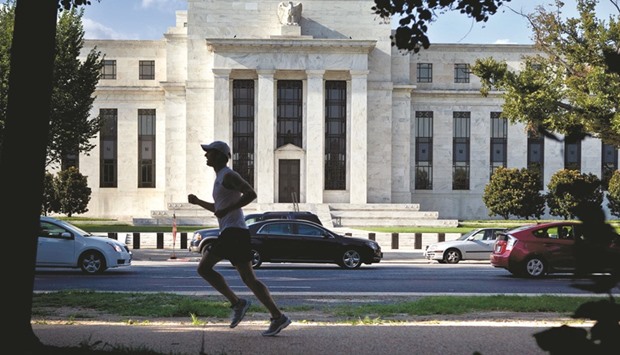Two-year notes rallied the most since October 2014 last week after central-bank policy makers cut their median projection for 2016 interest rates in half.
The statement left traders seeking clarity about why, exactly, Fed officials lowered their estimates, after US economic data strengthened in February even amid global market volatility.
“We want to believe what we’re being told, in terms of the Fed’s data-dependent role,” said Guy Haselmann, head of capital- markets strategy in New York at Bank of Nova Scotia, one of 22 primary dealers that trade with the Fed. “We’re getting absolutely bamboozled because it’s as if the rules are changing.”
That illuminates communication issues between traders and the Fed. Global developments seem to have come into tighter focus for US central bankers, said Brian Edmonds, the head of interest rates in New York with Cantor Fitzgerald Co, a primary dealer.
He sees a conflict between strong US economic data and the Fed’s purported reasons for raising interest rates more slowly.
“Saying you’re data dependent and then coming out with that commentary is just absurd,” Edmonds said. “If you’re forward thinking and looking at what might happen, that’s another thing.”
The benchmark 10-year note yield fell 11 basis points this week, or 0.11 percentage point, to 1.87%.
The 1.625% security maturing in February 2026 rose 31/32, or $9.69 per $1,000 face amount to, 97 3/4. The two-year note’s yield fell 12 basis points to 0.84%.
The median Fed projection was lowered to two interest-rate increases this year, down from four at its December meeting.
Traders are pricing in just a 68% probability that the Fed will raises rates by year end, based on the assumption that the effective fed funds rate will trade at the middle of the new FOMC target range after the next increase.
That’s below the 80% probability before the meeting, yet above the 17% chance traders saw during the height of the market volatility on February 11.
The Fed’s decision prompted the fourth-biggest market reaction - outside of the financial crisis - since 2000, according to analysts at Goldman Sachs Group.
“The meaningful policy surprises in recent years are a puzzle in light of the large amount of information Fed officials now provide about their reaction function,” wrote analysts including Zach Pandl and Daan Struyven.
The analysts said the extreme response was based on higher economic uncertainty, confusion about whether the Fed is trying to change policy through communication, or “the fact that markets receive more relevant information at Federal Open Market Committee meetings and less between meetings.”
Part of the Fed’s reduced rate path may be based on concern that economic growth remains uneven, said Sean Simko, who manages $8bn at SEI Investments Co in Oaks, Pennsylvania.
“When it comes to overall growth, or the sustainability of stronger growth, we had been of the view that things were still choppy,” Simko said.
Fed Chair Janet Yellen said in prepared statements on Wednesday that there was a benefit to the gap between the market’s projections for rates and their own.
“The accompanying decline in longer-term interest rates should help cushion any possible adverse effects on domestic economic activity,” she said.
The projection mismatch may just as easily erode confidence in the Fed and the forward guidance it offers, Edmonds said.
”If the Fed is actually not data dependent anymore, they should let us know,” Edmonds said, “If they are dependent but on foreign data, they should also let us know.”

A runner passes the Federal Reserve building in Washington. Analysts see a conflict between strong US economic data and the Fed’s purported reasons for raising interest rates more slowly.


